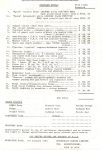Designed by Frank Pryor for serious cruising and launched in 1973, the Leisure 23 was an immediate success. The first thing that impresses most people about the Leisure 23 is the ample deck space, large deep cushioned cockpit and surprisingly roomy accommodation for up to five people. With a high ballast ration of 48%, the L23 proved a most seaworthy yacht.
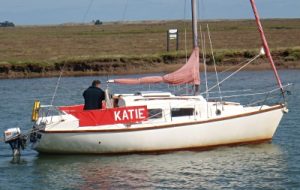
Leisure 23 ‘Katie’ sailing in the Crouch
The hull is of one piece, moulded GRP for minimum maintenance, with interior mouldings and bulkheads bonded in for exceptional strength and rigidity. A balsa sandwich deck provides further strength and excellent insulation. Fin or twin keel (hydrofoil section) versions were built, keels being made in cast iron. Rudder and skeg are moulded GRP with steel framework and fittings. A teak rubbing strake is standard to protect the topsides. Moulded non-slip areas on deck help to provide a secure foothold whilst working forward.
An outboard engine (8-10hp) was fitted as the standard auxiliary, but many are fitted with a 10hp inboard diesel engine, usually a Volvo Penta Saildrive unit. The spars are in aluminium alloy. Originally gold, the spars of later boats are black or silver. All standing rigging and rigging screws are in stainless steel and halyards are internal to the mast.
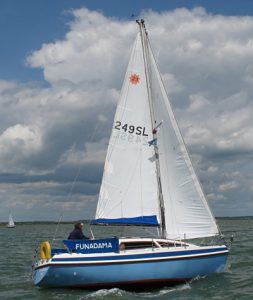
Leisure 23SL ‘Funadama’ sailing in the Blackwater
The accommodation comprises a main saloon cabin in a dinette arrangement, with a large fore cabin. Two fore cabin arrangements were supplied, either with or without a separate toilet compartment. Five berths are available, although one is very short when a separate toilet compartment is fitted. A galley with two-burner gas stove and a sink with freshwater pump is standard. Much use is made of teak and teak veneers throughout the cabin giving a warm appearance.
Leisure 23 SL
Introduced two years later, the Leisure 23SL has an identical hull and rig to the Leisure 23, but has a different deck moulding featuring a wedge shaped coach roof and higher side decks. This increased the headroom by an inch in the cabin.
| Length Overall | 6.90 m | 22 ft 8 in |
| Length Waterline | 6.09 m | 20 ft |
| Beam | 2.39 m | 7 ft 10 in |
| Headroom | ||
| L23 | 1.75 m | 5 ft 9 in |
| L23SL | 1.79 m | 5 ft 10 in |
| Draft | ||
| Fin | 1.19 m | 3 ft 11 in |
| Twin | 0.81 m | 2 ft 8 in |
| Displacement | 1841 kg | 4050 lbs |
| Keels | 886 kg | 1950 lbs |
| Ballast Ratio | 48% | |
| Mast | ||
| Standard | 7.93 m | 26 ft |
| Lake Rig | 9.0 m | 30 ft |
| Mainsail | 8.4 m2 | 90 ft2 |
| Working Jib | 9.7 m2 | 104 ft2 |
| No.1 Jib | 7.9 m2 | 85 ft2 |
| No.1 Storm Jib | 4.7 m2 | 51 ft2 |
| No.2 Storm Jib | 2.8 m2 | 30 ft2 |
| Genoa | 14.7 m2 | 158 ft2 |
| Spinnaker | 32.5 m2 | 350 ft2 |
Brochures
Click on the following images for a full size PDF of the brochure.
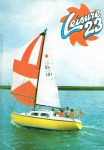 Leisure 23 Brochure |
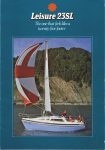 Leisure 23SL Brochure |
Performance
For cruising boats, The RYA has updated the Portsmouth Yardstick scheme with the National Handicap for Cruisers (NHC).
More up to date information may be obtainable from the RYA NHC site and the Byron web site.
The only yardstick information we have are various Club Numbers (CN) and Recorded Numbers (RN) as follows:
| Keel | Engine | Propeller | Number (Year/Source) | ||
|---|---|---|---|---|---|
| Twin | Inboard | 2 Blade | CN1250 (1999) | RN1226 (1996) | CN1195 (Byron) |
| Twin | Inboard | Folding | CN1240 (1999) | CN1160 (1999) | |
| Twin | Outboard | 2 Blade | CN1190 (1999) | RN1240 (1988) | RN1220 (1983) |
| Fin | Inboard | Folding | CN1190 (1999) | RN1190 (1983) | CN1122 (Byron) |


